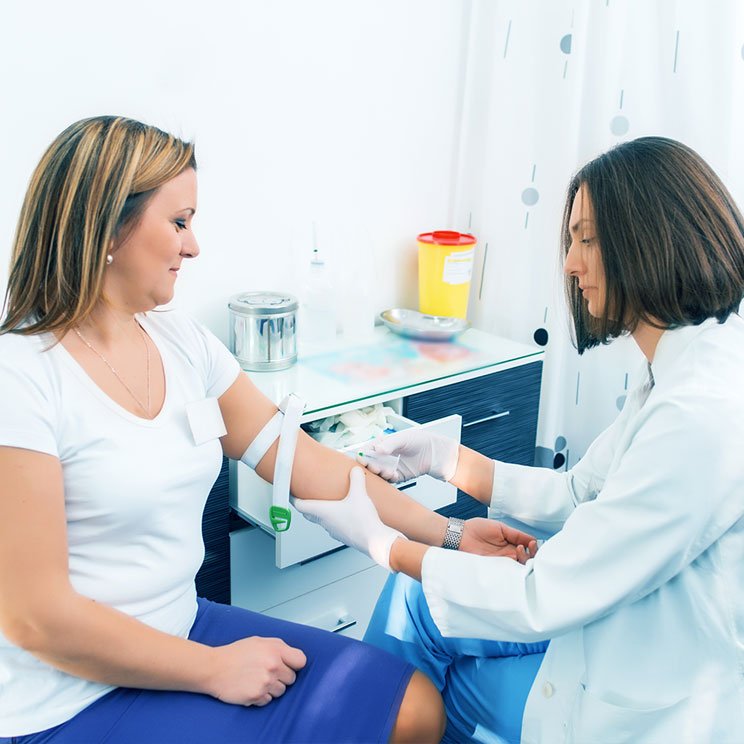Ultimate Guide to Phlebotomy Tests & Tubes: Essential tips for Accurate Blood Collection
If you’re entering the world of medical diagnostics or simply want to understand how blood tests are performed, this thorough guide is for you. From understanding various phlebotomy tests to choosing the right collection tubes, we’ll cover everything you need to know for ensuring precise and reliable blood sample collection. Accurate blood collection is critical for correct diagnosis, treatment monitoring, and health assessments. Let’s delve into the essential tips, common blood tests, types of blood collection tubes, and best practices for achieving optimal results.
What Is Phlebotomy and Why is It Significant?
Phlebotomy-the process of drawing blood from a vein-is a essential procedure in medical diagnostics. The accuracy of blood test results hinges on proper blood collection techniques, suitable sample tubes, and correct handling. Whether for routine health screenings, disease diagnosis, or monitoring treatments, precise blood collection ensures reliable lab analysis, impacting patient care substantially.
Common Types of Blood Tests in Phlebotomy
Different blood tests require specific types of samples, each serving unique diagnostic purposes. Here are some of the most common blood tests you might encounter:
1. Complete Blood count (CBC)
Monitors overall health, detects anemia, infections, and other hematological conditions.
2. Lipid Profile
Measures cholesterol and triglycerides to assess cardiovascular risk.
3. Blood Glucose Test
Evaluates blood sugar levels, vital for diabetes management.
4. Liver Function Tests (LFTs)
Assesses liver health and detects liver diseases.
5. Kidney Function Tests
Includes BUN and creatinine levels to evaluate renal health.
6. hormone Tests
Checks hormone levels like TSH,testosterone,or cortisol.
Types of blood Collection Tubes & Their Specific Uses
Choosing the correct blood collection tube is crucial for accurate test results. Different tests require specific additives and tube types.Here’s an overview of the most commonly used blood tubes:
| Tube Type | color & Additive | Common Uses |
|---|---|---|
| Serum Separator Tube (SST) | Gold or tiger-top, clot activator + gel | Chemistry, serology, drug testing |
| Plain Red Tube | No additive | Serology, blood bank, criteria for serum collection |
| Light Blue Tube | Sodium citrate, 3.2% or 3.8% | Coagulation tests like PT, PTT |
| Green Tube | Sodium heparin or lithium heparin | Stat chemistry, plasma testing |
| Lavender or Purple Tube | EDTA anticoagulant | Hematology, CBC, blood donation |
| Gray Tube | Potassium oxalate and sodium fluoride | Blood glucose testing, alcohol screening |
Essential Tips for accurate blood Collection
Maintaining accuracy in blood collection involves attention to details at every step. Here are vital tips to ensure high-quality samples:
1. Proper Patient Identification
- Confirm patient identity using two identifiers (name and date of birth).
- Ensure patient understands the procedure.
2. Correct Site Selection and Readiness
- Choose the median cubital vein when possible for comfort and accessibility.
- Apply tourniquet correctly (about 3-4 inches above the site) to avoid hemoconcentration.
- Cleanse the site wiht alcohol,letting it dry fully to prevent contamination.
3. Proper Equipment and Tube Handling
- use sterile,single-use needles and tubes.
- Verify the tube type matches the required test.
- Invert tubes gently to mix additives without causing hemolysis.
4. Technique and Safety
- Insert the needle at a 15-30 degree angle,avoiding multiple punctures.
- Remove tourniquet once blood flow begins to reduce hemoconcentration.
- Ensure proper labeling immediately after collection.
- Dispose of sharps safely following CDC guidelines.
5. Post-Collection handling
- Transport samples promptly to the lab, maintaining required temperature conditions.
- Ensure correct storage for specific tests (e.g., refrigerate glucose samples).
Benefits of Proper Blood Collection Techniques
Implementing standardized and precise procedures delivers multiple benefits:
- Enhanced Test Accuracy: reduces the risk of false results and re-tests.
- Patient Safety: Minimizes discomfort and complications.
- laboratory Efficiency: Ensures smooth processing and faster turnaround times.
- compliance: Meets regulatory standards and reduces liability risks.
Practical Tips for Phlebotomists & Lab Technicians
- Stay updated with the latest guidelines from organizations like CLSI (Clinical and laboratory Standards Institute).
- Practice gentle, confident insertion techniques to reduce patient anxiety and vein trauma.
- Double-check labels and test requisitions before collection.
- Always wear PPE and follow infection control protocols.
- Document any difficulties or irregularities encountered during collection.
Case Study: Improving Blood collection in a busy Clinic
A mid-sized healthcare clinic faced frequent pre-analytical errors leading to delayed diagnoses. Implementing a standardized training program emphasizing proper site selection, correct tube handling, and thorough patient identification reduced errors by 40%.Regular audits and feedback reinforced best practices, resulting in a significant improvement in sample quality and patient satisfaction.
First-Hand Experience: Lessons Learned
As a seasoned phlebotomist, consistent practice, ongoing education, and patient communication are keys to success. The most rewarding moments come from seeing confident colleagues and satisfied patients, knowing that accurate blood samples contribute directly to better health outcomes.
Conclusion
Mastering the art of blood collection through understanding the various phlebotomy tests, selecting the appropriate tubes, and adhering to best practices is essential for delivering accurate diagnostic results. Whether you’re a new technician or a seasoned professional, continuously refining your technique will improve patient care and laboratory efficiency. Remember, precision in blood collection starts with knowledge and attention to detail-making every sample count for better health. Stay informed, stay safe, and excel in your phlebotomy practice!
